Factsheet
Wildlife in Winter
Even though our British winter is not nearly so cold and severe as polar winters, plants and animals still have to be able to adapt to low temperatures and a shortage of food.
Plant Preparation
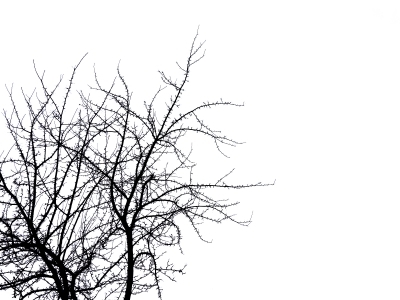 Land plants lose water through their leaves by a process called transpiration. Apart from the problem of a shortage of available water during the winter, photosynthesis in the leaves would also be difficult because there are only a few hours of very weak sunlight. Many plants therefore, overcome these problems by ‘shutting down’ almost completely.
Land plants lose water through their leaves by a process called transpiration. Apart from the problem of a shortage of available water during the winter, photosynthesis in the leaves would also be difficult because there are only a few hours of very weak sunlight. Many plants therefore, overcome these problems by ‘shutting down’ almost completely.
Perennials, plants which continue growing for several years, may lose all their leaves and stems, relying on the food stored in their underground roots to get them through the winter. Annuals are plants which flower in the summer and then die off completely, leaving only their seeds to survive the winter and germinate the following spring. Some plants produce seeds which actually need to be frozen in the winter before they are ready to germinate. This ensures that they do not germinate during a spell of warm autumn weather.
Falling Leaves
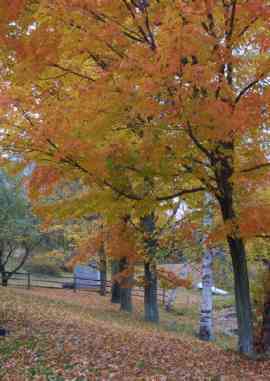 Evergreen trees, such as many conifers, often have narrow, needle-like leaves and a thick waxy coating and these adaptations help them to conserve water during winter.
Evergreen trees, such as many conifers, often have narrow, needle-like leaves and a thick waxy coating and these adaptations help them to conserve water during winter.
Deciduous trees, such as oak, ash and beech, shed their leaves in the autumn. On frosty winter days, the water in the soil is frozen, so it cannot be taken up by the roots; the air temperature may be quite warm if the sun is shining, so if leaves were still on the trees they would lose a lot of water and wilt. This would result in the death of the tree. So dropping the leaves before winter sets in is the most sensible thing a deciduous tree can do! They can ‘tick over’ during the winter months using stored energy in their roots.
In the autumn a corky layer forms at the base of deciduous leaves, cutting off water supplies. This causes the green colour (chlorophyll) to fade, revealing shades of yellow, orange or red beneath.
Bird Migration
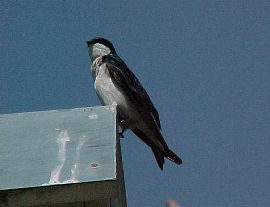 Birds are lucky in being able to fly and at the end of the summer, when the days are getting shorter and food more scarce, some species fly off to a warmer climate. The swallow is perhaps the best known of all migrant bird species. Flocks of swallows arrive in Britain in late spring, having flown all the way from southern Africa. They then spend the summer here, raising two or three broods, and then flock together for the return journey. Like its close relative, the house martin, the swallow is well-adapted for long-distance flight, having a streamlined body and narrow, curved wings.
Birds are lucky in being able to fly and at the end of the summer, when the days are getting shorter and food more scarce, some species fly off to a warmer climate. The swallow is perhaps the best known of all migrant bird species. Flocks of swallows arrive in Britain in late spring, having flown all the way from southern Africa. They then spend the summer here, raising two or three broods, and then flock together for the return journey. Like its close relative, the house martin, the swallow is well-adapted for long-distance flight, having a streamlined body and narrow, curved wings.
Many birds stay in Britain during the winter, some of them having flown in from their northern breeding grounds (perhaps Russia, Greenland, Scandinavia or the Arctic) to avoid the extremely cold conditions of those places. Although some blackbirds, song thrushes and starlings are resident birds, i.e. they spend the whole year in Britain, others flock into the country from northern climes to enjoy our comparatively mild winter. Other winter migrants include redwings, fieldfares and bramblings. Wild fruits and seeds of all kinds are an important source of food for all these birds, and they fluff out their features on cold days to help keep themselves warm. Many species of water fowl and waders also flock to our shores to find ice-free water and mud-flats.
How do ‘Cold-blooded’ Animals Cope in the Winter?
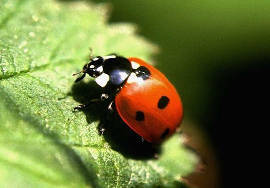 Invertebrates (animals without backbones) and vertebrate fish, amphibians and reptiles, are said to be ‘cold-blooded’ because their body temperature changes with that of their surroundings. Low temperatures make it difficult for these creatures to remain active in winter – so what happens to them?
Invertebrates (animals without backbones) and vertebrate fish, amphibians and reptiles, are said to be ‘cold-blooded’ because their body temperature changes with that of their surroundings. Low temperatures make it difficult for these creatures to remain active in winter – so what happens to them?
Snakes, lizards, frogs, toads and newts slow down all their body processes almost to a stop in very cold weather. This is known as diapause and in this state the animals use up just a small amount of their store of body fat and can survive for some weeks, barely alive. They hide away in the winter under stones, logs, in compost heaps, old mouse burrows – all sorts of places where they may be safe from hungry predators.
Many invertebrates hide themselves away too. Some adult minibeasts die at the end of the summer but their eggs, larvae or pupae spend the winter hidden away, ready to continue their life-cycle when the spring arrives. Most female spiders for example, die after laying eggs in the autumn, leaving their eggs in a fluffy, whitish cocoon, tucked away under a log or in a corner of a building. Thousands of tiny spiders are released from the cocoon in the spring.
Some species of invertebrates overwinter, often as adults, in a state called torpor. They find somewhere secluded, perhaps under a log, stone or in a hole, and stay there throughout the cold months. Special chemicals are released into their body fluids to prevent them from freezing, in the way that anti-freeze works in the radiator of a car. Many caterpillars, some butterflies, slugs, snails, queen wasps and bumblebees spend the winter in this way.
Ladybirds often overwinter in colonies in thick hollow stems, amongst leaf litter, around window and door edges, under logs and many other sheltered corners such as the corner of a garden shed. Take care not to disturb sleeping ladybirds if you find them when tidying up the garden; in the spring they will wake up and begin eating aphid pests which will also have reappeared.
Mammals and Hibernation
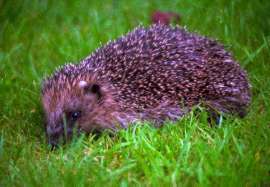 You may have noticed that your pet cat, dog or rabbit begins to grow a thicker coat as the days become shorter in the autumn. This, of course, happens with wild mammals too, such as foxes, badgers and squirrels and the extra fur helps them to keep their body temperature constant during very cold weather.
You may have noticed that your pet cat, dog or rabbit begins to grow a thicker coat as the days become shorter in the autumn. This, of course, happens with wild mammals too, such as foxes, badgers and squirrels and the extra fur helps them to keep their body temperature constant during very cold weather.
Autumn is a time of preparation for mammals. They fatten themselves up by eating as much as possible. Squirrels, voles and mice take advantage of the autumn harvest of fruits and nuts, storing some of these away in various places, ready for eating on winter days when food is scarce.
Smaller mammals lose heat more quickly than larger ones and so they must burn up their fat fast to keep warm. This is why mice and voles make themselves cosy, underground nests during the winter, and sleep there on the coldest days. In this way, they save energy by being inactive. Squirrels and badgers also save energy by sleeping through spells of bad weather. Foxes and deer can remain active throughout the winter because of their larger size.
The mammals which find it most difficult of all to cope in the winter are those which rely mainly on invertebrates for their food. Most invertebrates, as we have seen, are hard to find during the winter. The only way the insectivorous mammals can survive is to slow their body processes to almost a standstill – and they do this by hibernating.
The hedgehog is perhaps the most well known hibernator in Britain. It fattens up on slugs, snails and other minibeasts in the autumn, and spends the cold months curled up in a cosy nest of leaves and dry grass. Bats, which rely entirely on insects, also hibernate, wrapped in their wings deep in a cave, tree or attic somewhere. During its deep sleep, a hibernating mammal’s body temperature drops well below the normal 37C (it feels very cold to the touch), its heart beat slows to as little as three or four per minute, and it breathes only every two minutes or so. Hedgehogs and bats do not stay asleep for the whole winter. They will wake up on warmer days and look for food or water. If the temperature drops too low, they will also wake up and start shivering in order to keep the body temperature above freezing. Physical disturbance will also awake a hibernating hedgehog or bat. Every time they wake up a great deal of energy is used up, so a long, cold winter is better for these animals than a winter with lots of warm spells.
The dormouse is the only hibernating rodent in Britain. Both the common dormouse and the introduced edible dormouse are known as true hibernators because they sleep from October to April without waking up at all. Both species fatten themselves up in the autumn with extra food, often doubling their summer weight. The common dormouse (not now thought to be as common as it used to be) eats pollen, flowers, insects and fruits – but in the autumn its most important fattening-up food is hazel nuts. A winter nest is built on or near the ground, among tree roots or beneath a hedge. Here the dormouse curls up, its fluffy tail wrapped over its head for warmth, and ‘switches off’ to such an extent that it can be picked up without being woken!
Helping garden Wildlife Survive the Winter
Many wild animals perish during a long hard winter. It may be difficult to help the wildlife in the countryside but there is quite a lot you can do to lend a hand to those creatures living in your garden. After all, it is worth remembering that many garden animals are actually a great help to you in the spring and summer, protecting your plants from pests. Birds, hedgehogs, wasps, spiders, ladybirds, frogs and toads are just a few of the beneficial creatures inhabiting your garden.
Making Winter Habitats
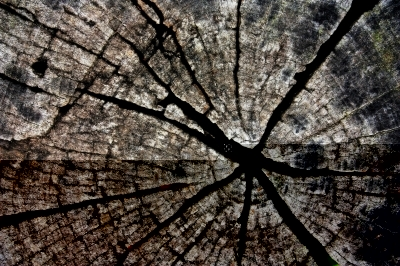
Overwintering sites are very important to a whole range of animals and an undisturbed corner of the garden will be sought out by wildlife in need of a winter home. Although the traditional autumn bonfire is a good way of tidying up the garden for the winter, burning piles of garden prunings and fallen leaves can be a disaster for wildlife! Every year thousands of hedgehogs and other small animals climb into woody piles thinking they have found the ideal place to spend the winter, only to perish in the flames. Burning plant material is a waste of potential overwintering sites, so try to resist being too tidy in the garden!
It’s easy to create winter homes for garden wildlife – either at home or in your school’s garden. Just find a quiet corner or two, behind a shed is often a good place, and make one or more of the following mini-habitats -
- A pile of logs – ideal for minibeasts, hedgehogs, wood mice, wrens and even foxes.
- A pile of rocks and stones – ideal for minibeasts, slow worms, frogs and toads. Also a good idea is to dig shallow holes, about 10cm deep, and cover almost completely with paving slabs. Excellent for frogs and toads.
- A loose pile of tree leaves, grass clippings or straw – ideal for minibeasts, wood mice and shrews.
- A sheet of corrugated iron – the ‘tunnels’ are ideal for reptiles, amphibians, wood mice and voles.
- With all the plant prunings around, autumn is a good time to start a compost heap. Apart from being an ideal way to recycle plant ‘waste’ and provide excellent compost for your garden, a compost heap is an additional winter habitat for wildlife.
Feeding the Birds
Our resident birds and those visitors from Arctic regions find it difficult to find natural food during a hard winter. By December autumn fruits will have been used up and insects are hiding away. The ground may be frozen and water iced over. We can save the lives of our garden birds by putting out food and water on a regular basis.
Credits
Image: Wildlife in Winter - Britain by Vincent Cornelius
Adaptation
 Every living thing is adapted to enable it to cope with a particular habitat’s environmental factors such as the air, water, soil, light and temperature. For example, cacti plants are adapted specially to be able to withstand the dry conditions of a desert, whereas seaweeds are designed specially to live in salty water – neither would survive if they changed places.
Every living thing is adapted to enable it to cope with a particular habitat’s environmental factors such as the air, water, soil, light and temperature. For example, cacti plants are adapted specially to be able to withstand the dry conditions of a desert, whereas seaweeds are designed specially to live in salty water – neither would survive if they changed places.
Depending on what sort of habitat it lives in, an animal or plant may have to adjust itself to changes in its environment. The most obvious changes are those of lengthening and shortening of daylight hours, and increasing and decreasing temperature. This is what happens when autumn turns into winter.
Many plants and animals live in climates where the temperature never drops too low (as in Britain), so they don’t have to worry about surviving extreme cold. Some animals avoid the cold of winter by migrating to warmer climates. Those animals and plants that live in permanently cold areas (such as polar regions) however, need special adaptations which allow them to survive in their harsh environment.
Even though our British winter is not nearly so cold and severe as polar winters, plants and animals still have to be able to adapt to low temperatures and a shortage of food. The cold causes living things all sorts of problems. Freezing temperatures turn water into ice so that animals cannot drink, and plants cannot take up water through their roots to enable them to make food (the process known as photosynthesis).
Some animals, particularly insectivores such as hedgehogs and some birds, cannot find enough food during the winter months. Autumn is the time when wildlife prepares itself for the cold weather ahead.
Here are a few ways in which plants and animals manage to survive the British winter...
 Land plants lose water through their leaves by a process called transpiration. Apart from the problem of a shortage of available water during the winter, photosynthesis in the leaves would also be difficult because there are only a few hours of very weak sunlight. Many plants therefore, overcome these problems by ‘shutting down’ almost completely.
Land plants lose water through their leaves by a process called transpiration. Apart from the problem of a shortage of available water during the winter, photosynthesis in the leaves would also be difficult because there are only a few hours of very weak sunlight. Many plants therefore, overcome these problems by ‘shutting down’ almost completely.
 Evergreen trees, such as many conifers, often have narrow, needle-like leaves and a thick waxy coating and these adaptations help them to conserve water during winter.
Evergreen trees, such as many conifers, often have narrow, needle-like leaves and a thick waxy coating and these adaptations help them to conserve water during winter. Birds are lucky in being able to fly and at the end of the summer, when the days are getting shorter and food more scarce, some species fly off to a warmer climate. The swallow is perhaps the best known of all migrant bird species. Flocks of swallows arrive in Britain in late spring, having flown all the way from southern Africa. They then spend the summer here, raising two or three broods, and then flock together for the return journey. Like its close relative, the house martin, the swallow is well-adapted for long-distance flight, having a streamlined body and narrow, curved wings.
Birds are lucky in being able to fly and at the end of the summer, when the days are getting shorter and food more scarce, some species fly off to a warmer climate. The swallow is perhaps the best known of all migrant bird species. Flocks of swallows arrive in Britain in late spring, having flown all the way from southern Africa. They then spend the summer here, raising two or three broods, and then flock together for the return journey. Like its close relative, the house martin, the swallow is well-adapted for long-distance flight, having a streamlined body and narrow, curved wings. Invertebrates (animals without backbones) and vertebrate fish, amphibians and reptiles, are said to be ‘cold-blooded’ because their body temperature changes with that of their surroundings. Low temperatures make it difficult for these creatures to remain active in winter – so what happens to them?
Invertebrates (animals without backbones) and vertebrate fish, amphibians and reptiles, are said to be ‘cold-blooded’ because their body temperature changes with that of their surroundings. Low temperatures make it difficult for these creatures to remain active in winter – so what happens to them? You may have noticed that your pet cat, dog or rabbit begins to grow a thicker coat as the days become shorter in the autumn. This, of course, happens with wild mammals too, such as foxes, badgers and squirrels and the extra fur helps them to keep their body temperature constant during very cold weather.
You may have noticed that your pet cat, dog or rabbit begins to grow a thicker coat as the days become shorter in the autumn. This, of course, happens with wild mammals too, such as foxes, badgers and squirrels and the extra fur helps them to keep their body temperature constant during very cold weather.
 Every living thing is adapted to enable it to cope with a particular habitat’s environmental factors such as the air, water, soil, light and temperature. For example, cacti plants are adapted specially to be able to withstand the dry conditions of a desert, whereas seaweeds are designed specially to live in salty water – neither would survive if they changed places.
Every living thing is adapted to enable it to cope with a particular habitat’s environmental factors such as the air, water, soil, light and temperature. For example, cacti plants are adapted specially to be able to withstand the dry conditions of a desert, whereas seaweeds are designed specially to live in salty water – neither would survive if they changed places.